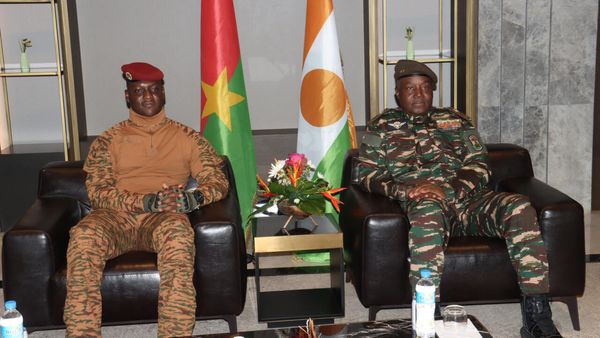
Have you ever wanted to see the world anew through the eyes of a child? To see every object and landscape as a brand new form? Glasgow-based artist Hayley Tompkins can show you how. Her ironically named show Far looks at things close up or in part andmakes them appear entirely different. Film screens flicker through obscured shots of everyday items – bread, old mobile phones, magazines, cables – while chairs, paper bags and shirts are drenched in paint, transforming them in the process.
Tompkins encourages attentive viewing. In the downstairs gallery, the painted chairs are objects to be sat on, and the five video works are presented on small screens. Produced between 2007 and 2022, the films are blurry, jumbled and taken from the angles you might expect a toddler to shoot were they given access to a phone. As the images chop and change, a captivating purpose and pattern emerges. A fuzzy, glowing item suddenly becomes the welcome screen of an old Nokia phone; a snippet of text starts to reveal a magazine article; a staircase leads to a row of glowing windows.

The films feature little sound; sometimes a child’s voice, the rumble of construction or the flickering of magazine pages breaks through, but the most consistent sound is that of a camera focusing and shooting. It fills the space with a rhythmic cracking noise as if eggs were giving birth to endless new life. It is evolution on speed; every fresh angle is a brand new moment on this planet.
Paint is Tompkins’s usual tool for making us take notice. And she does so in jauntily arranging brightly decorated chairs around the space. Each chair boasts a different texture and colour. Around them are some buckets with large heads cut out of magazines – they mirror the fragmented nature of the films, but in contrast to everything else don’t hold the gaze.

This is all very interesting, but the thing I really want to look at is a dazzling corner of paint. In a snug section of the dimly lit space, a chunky stage of yellow (entitled But I Don’t Even Think It’s You) glows under lights. I could stand here all day, staring into its lurid, smooth surface. This staring leads to confusion, the hard surfaces become fluid and it feels as though I am about to plunge into its spotless face.
But I Don’t Even Think It’s You is the pinnacle of this show, the title encapsulating that continued sense of the mundane graduating to the exotic. Upstairs, this theme continues with two shirts, and one arm of a shirt, splattered in paint and nailed to the wall. Their original function dissolves into something much more sculptural.
Most of the upstairs space is dedicated to 10 large abstract paintings. The arches, splashes and dribbles of acrylic flirt with revelation; sometimes I think I am about to see the Amalfi coast, or a couple eating dinner – but unlike the films downstairs, they remain obscure. What they do expose is Tompkins’s current preoccupations with certain colours. Created sequentially in the past eight weeks, the canvases pick up obsessions with purple, pink, green and shadows of black.
The appearance of a vivid purple mallet and paint-drenched sunglasses next to two of the canvases makes me wonder whether Tompkins is merely inviting us to imbue these objects with additional value, or is she suggesting we might like to take mallet to canvas and smash the place up? Undeniably, the paintings are energetic, colourful and joyful, but after all the subversions they are rather mundane. Paint on canvas is the most straightforward thing in this exhibition and nearly half the space is dedicated to it.
Far is well placed at Fruitmarket, right next to Edinburgh Waverley station, where streams of tourists will arrive every day. The fresh-eyed wonder and curiosity that Tompkins generates is useful when visiting a new city. After I exit the gallery to the intrigue of an unknown location, paving slabs, piles of leaves and even the formation of traffic become immeasurably more interesting.







